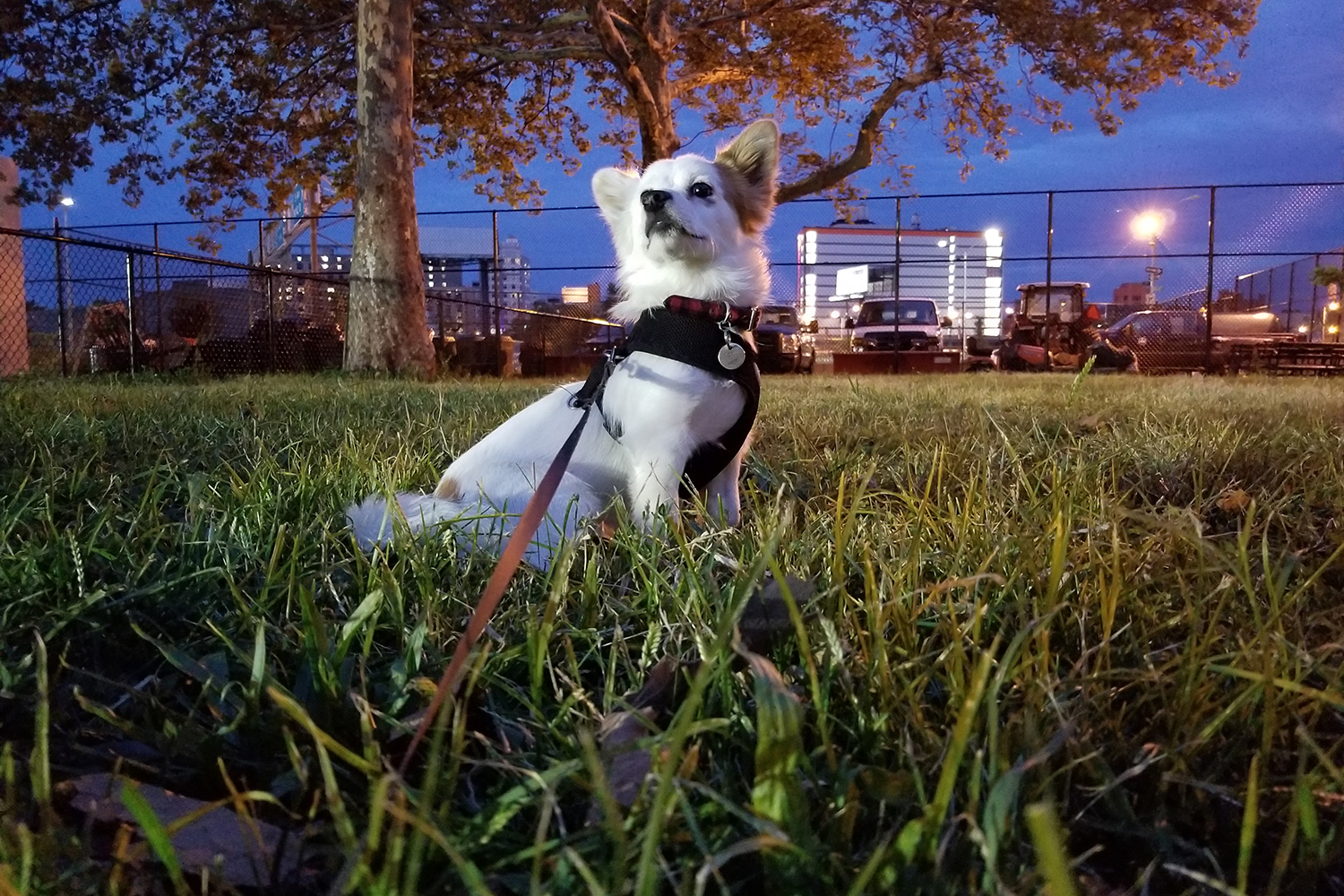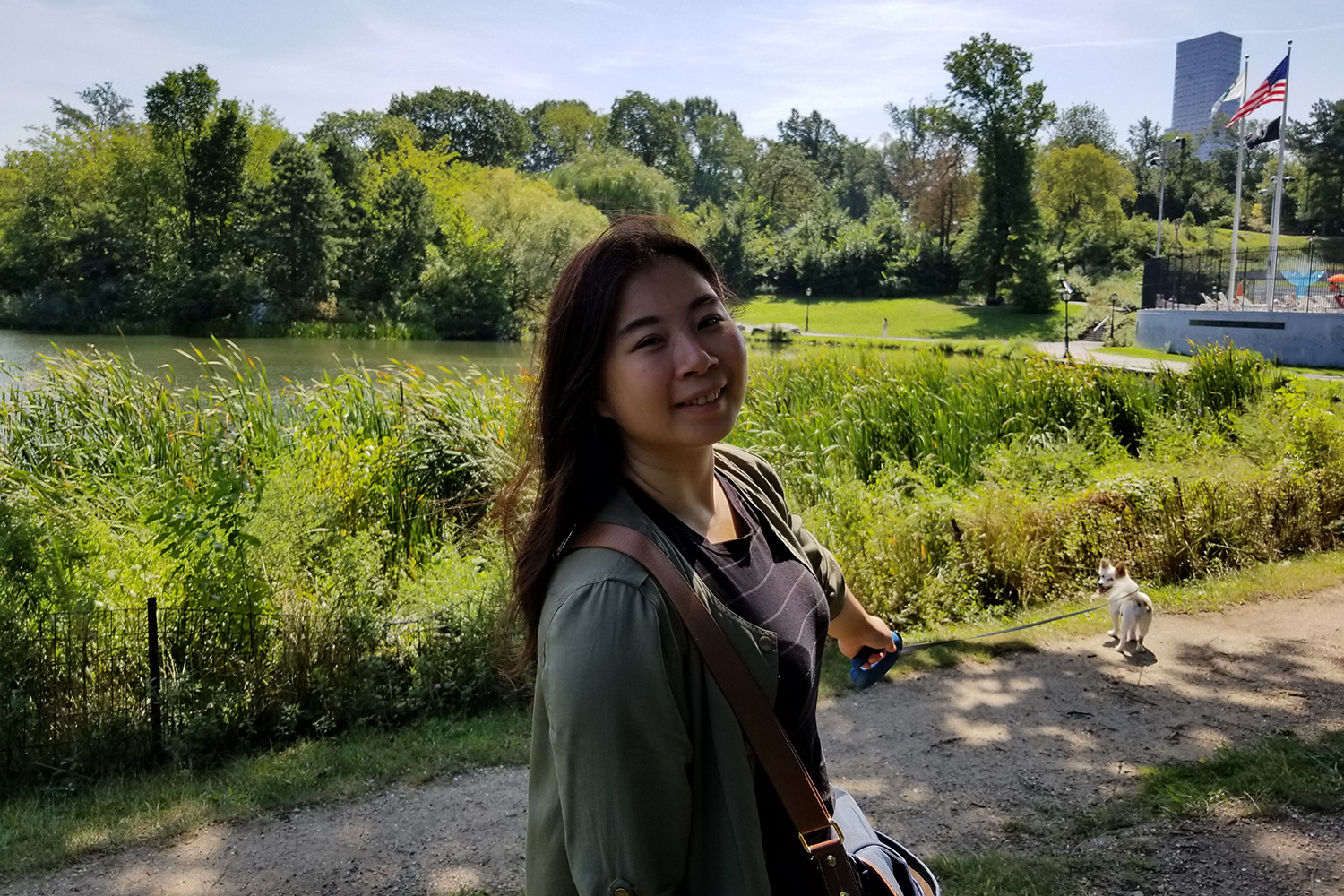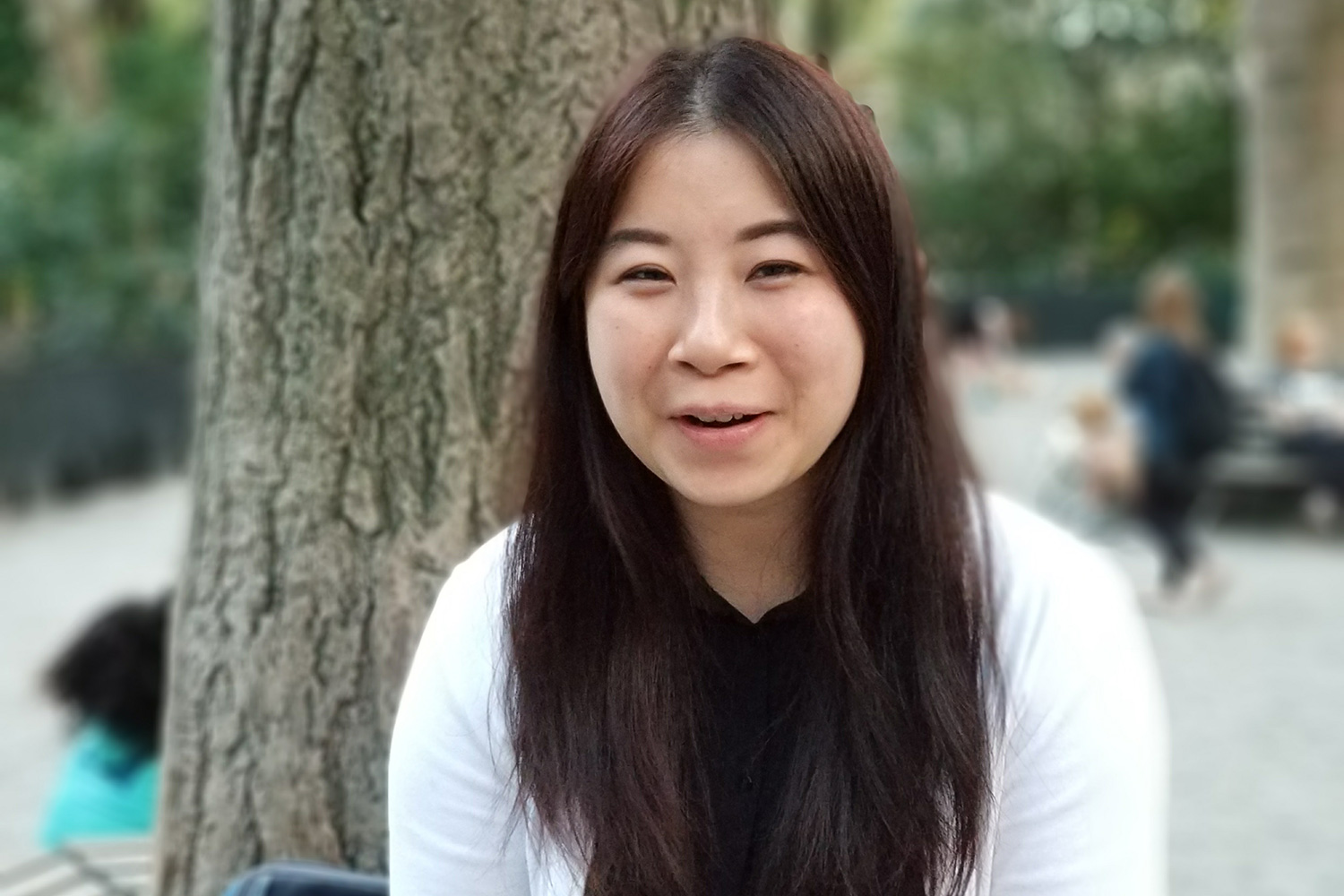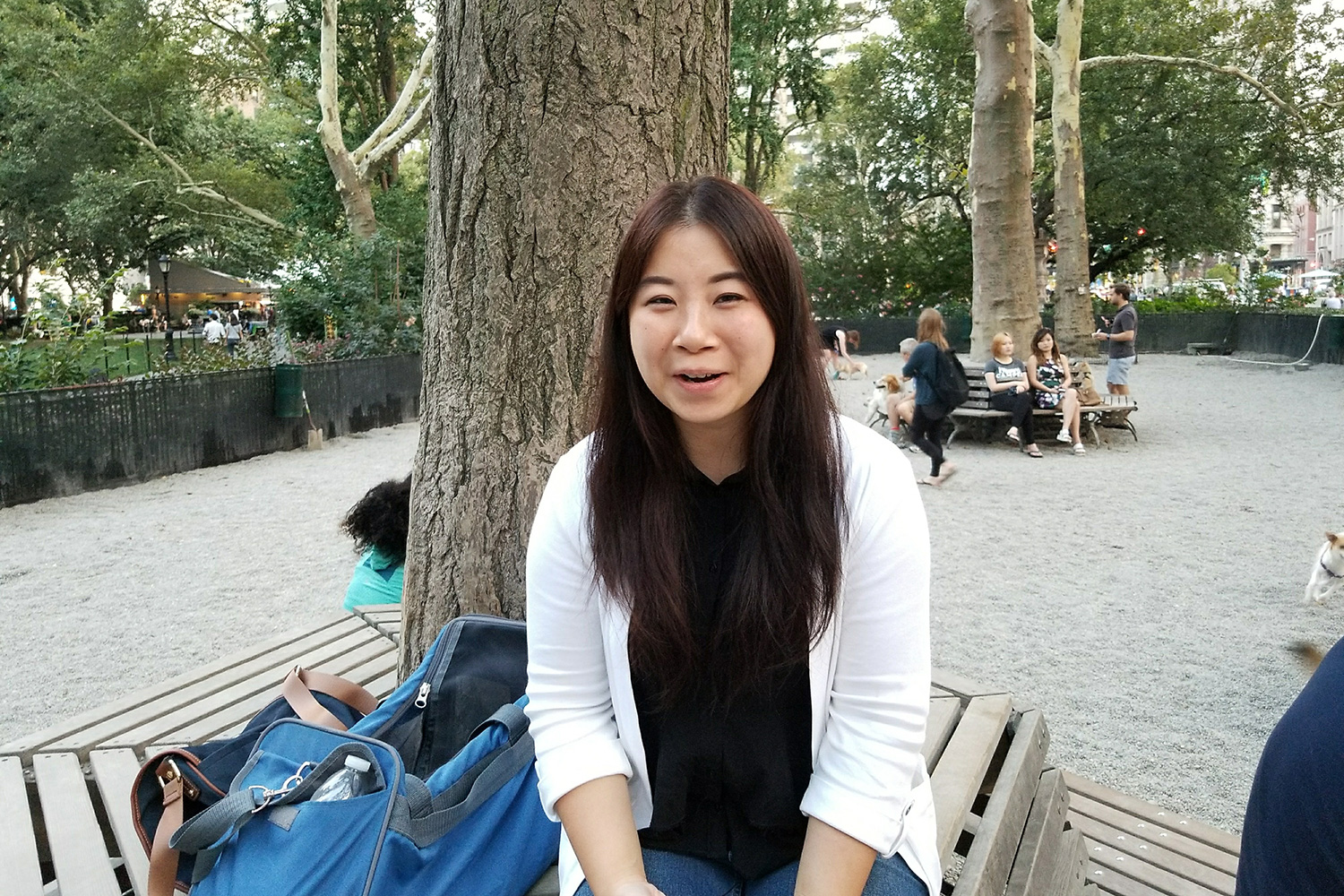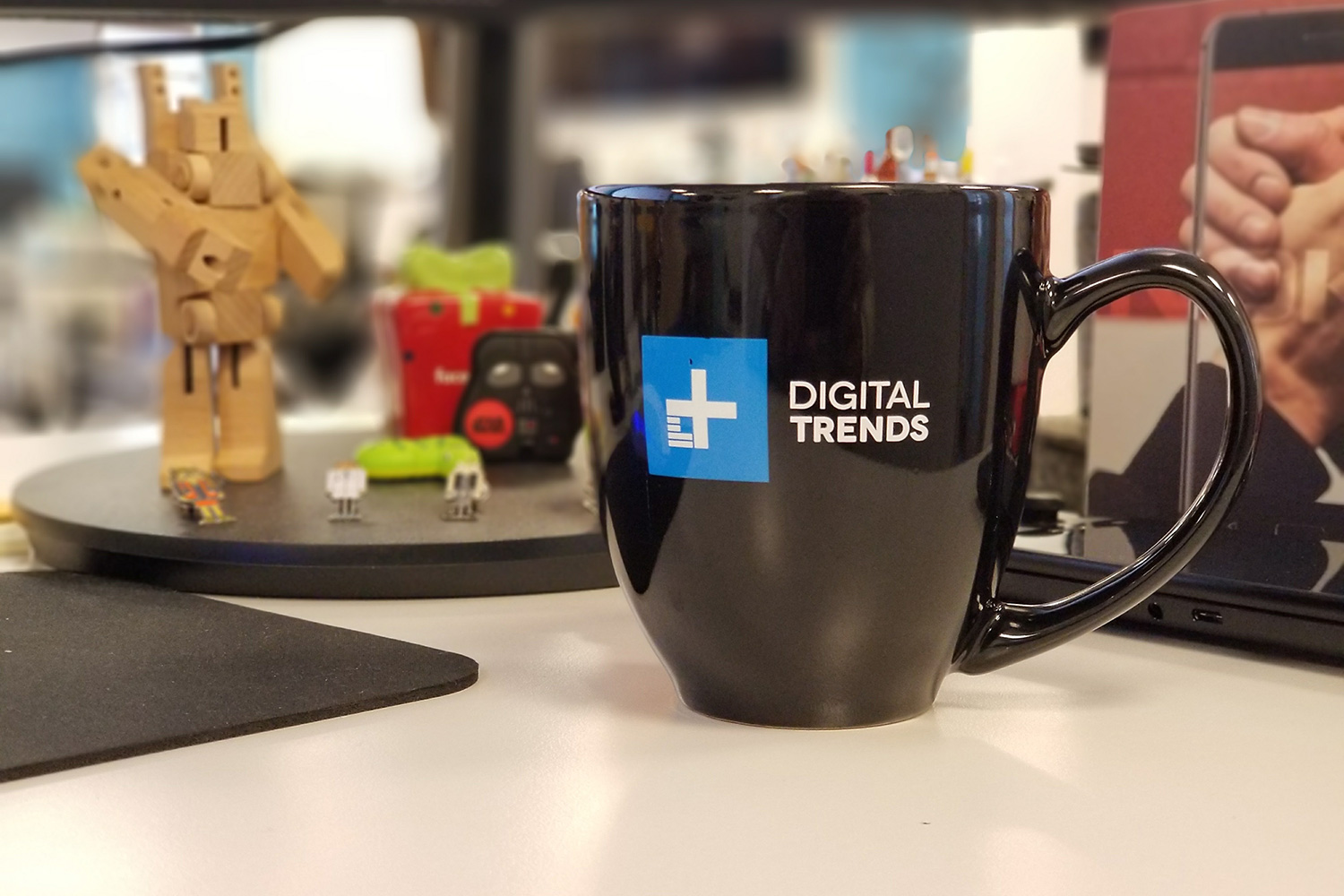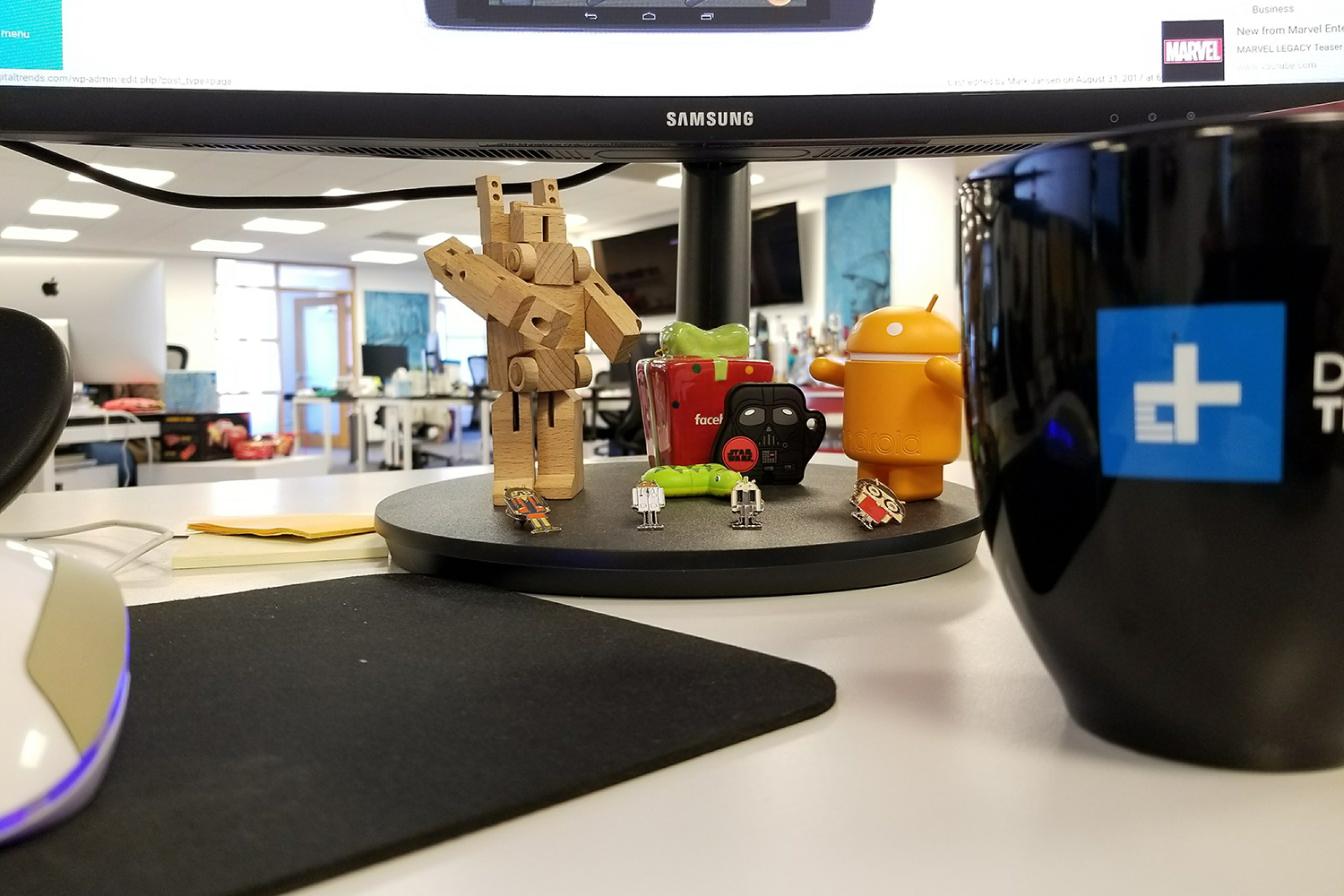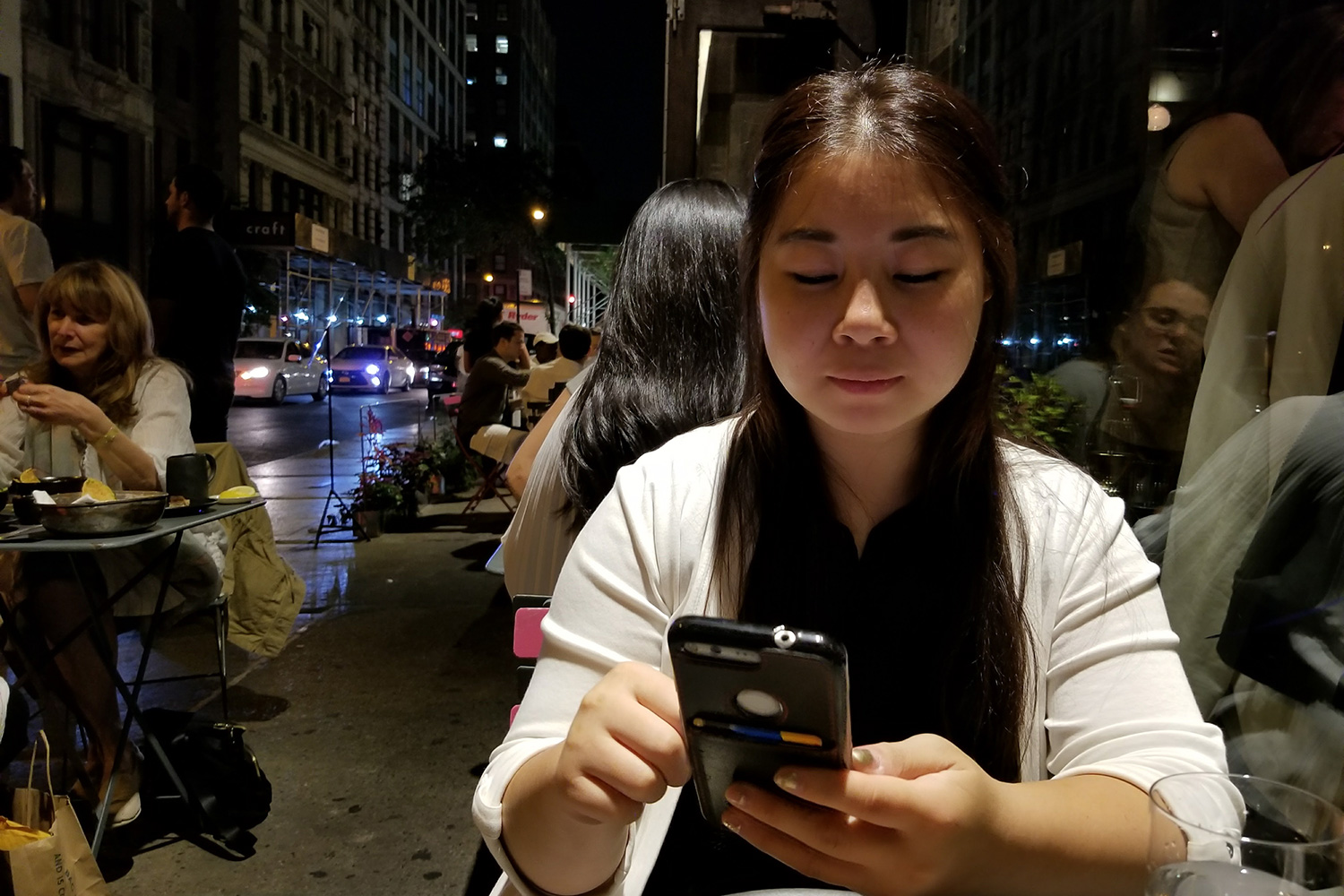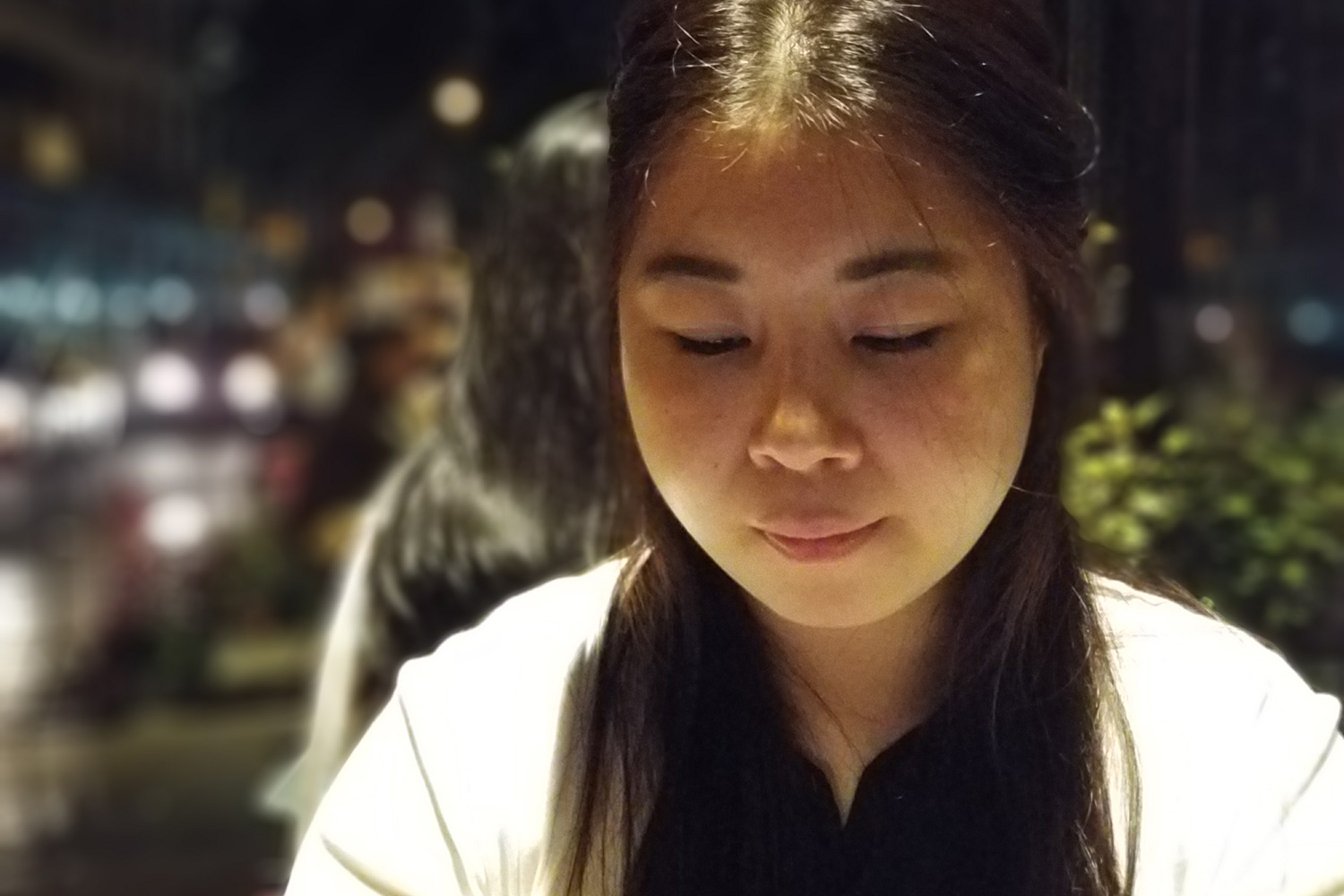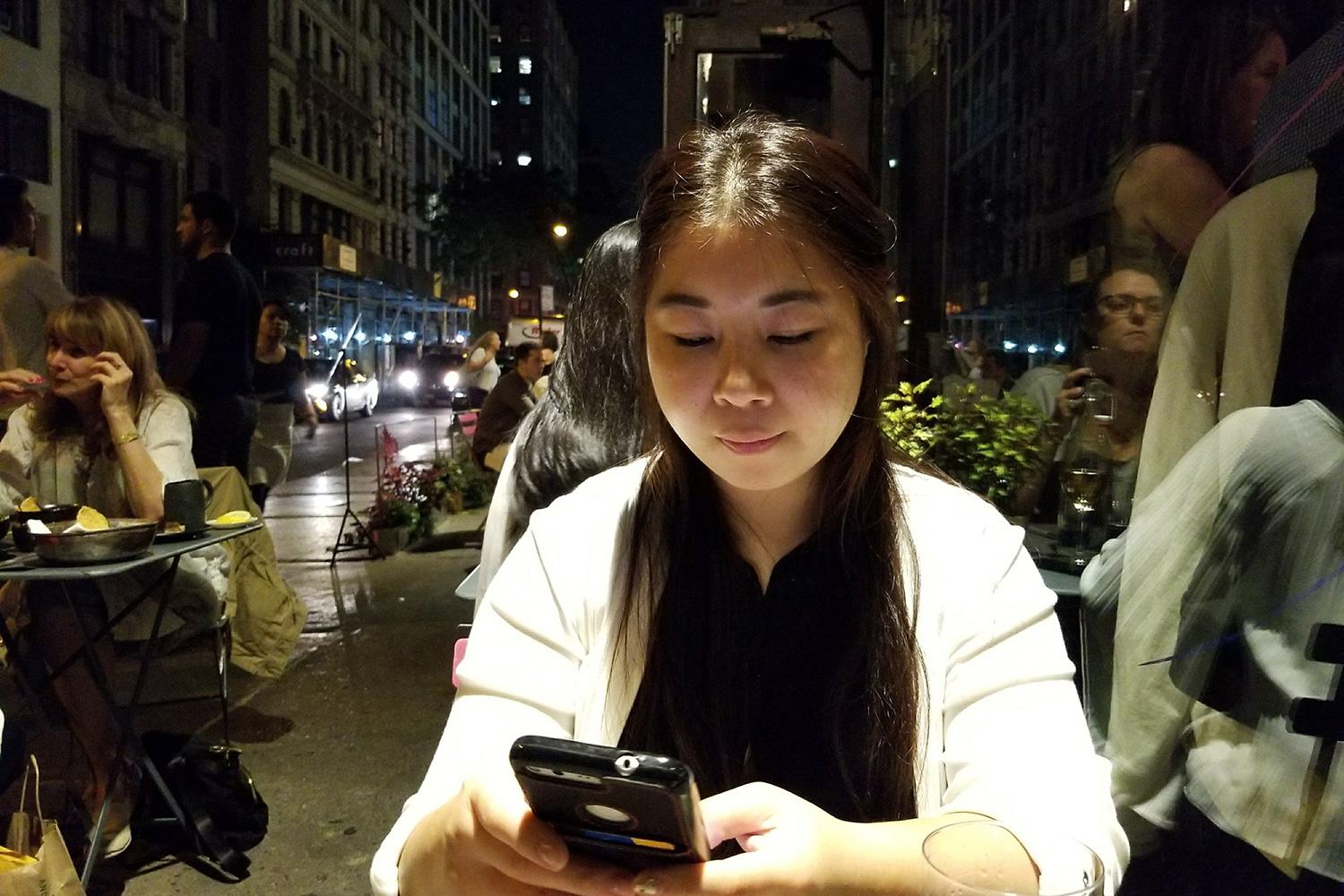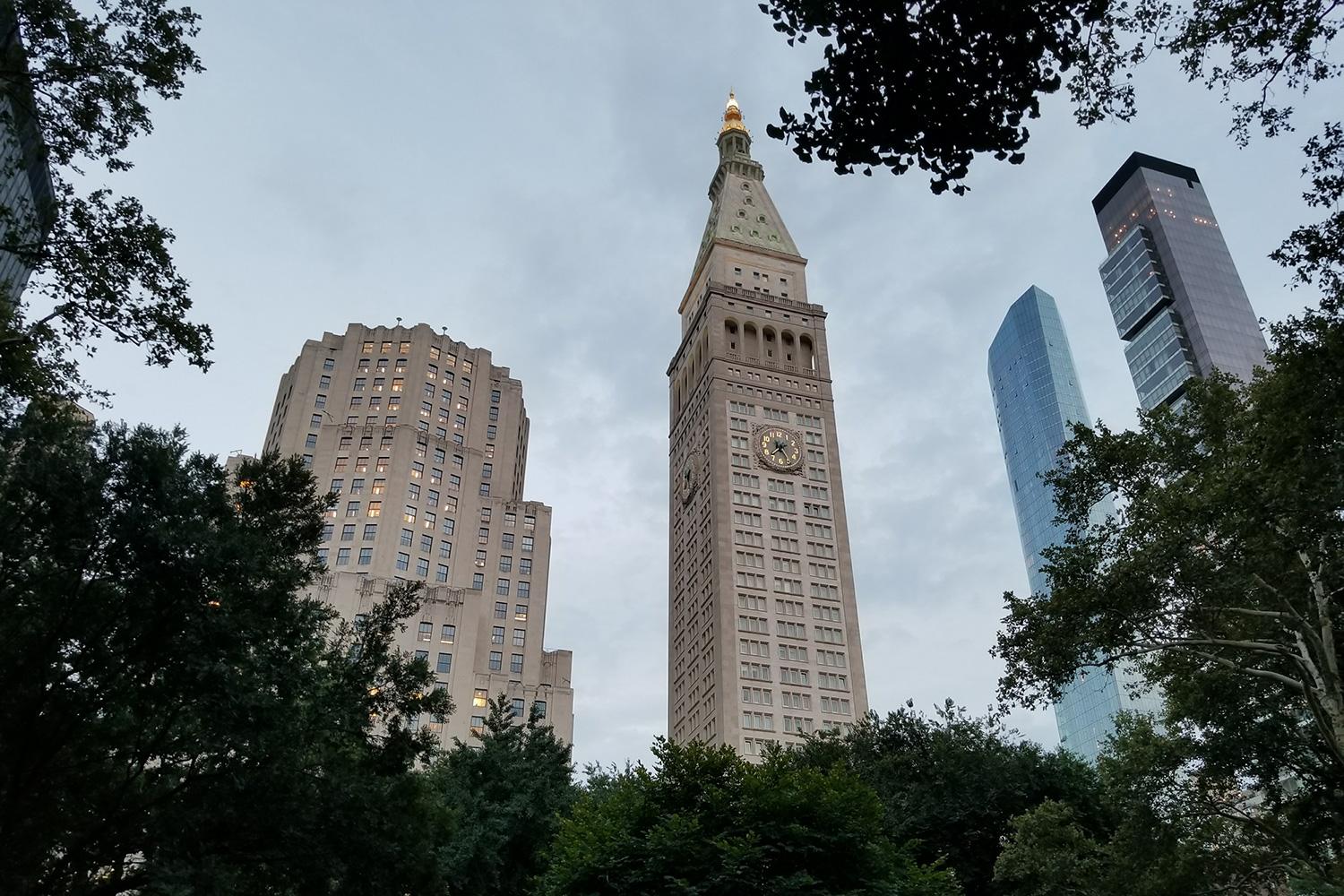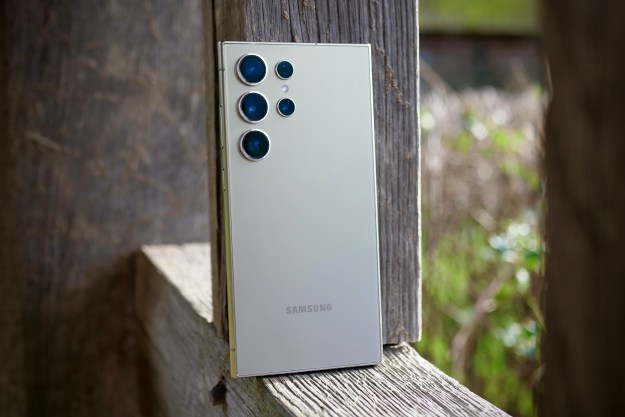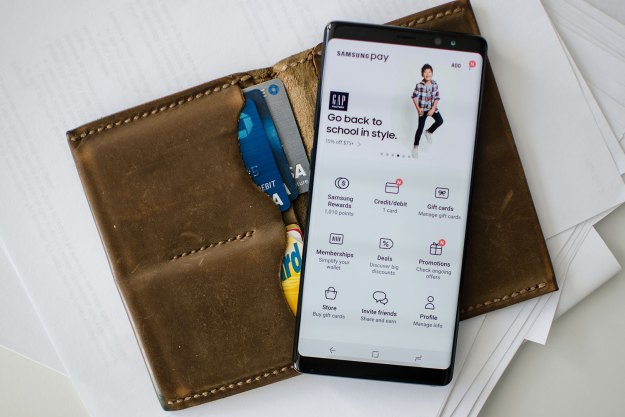
“From the dual camera and S Pen, to the gorgeous Infinity Display, the Galaxy Note 8 is an all-around fantastic phone.”
- Good dual cameras
- Daylong battery life
- Speedy performance
- Handy S Pen features
- Waterproof
- Expensive
- Live Focus needs some work
- Poor fingerprint sensor placement
The three key differences between Samsung’s Galaxy Note line and the Galaxy S series are a more angular shape, the inclusion of the S Pen stylus, and a bigger screen. With the new Galaxy Note 8, there’s another feature that gives it the edge against this year’s Galaxy S8 and S8 Plus: Dual cameras.
The S8 and the S8 Plus are Samsung’s first smartphones with the Infinity Display, where the edges of the screen are minimized to give you the most screen real estate possible. The Galaxy Note 8 has the same “bezel-less” design, and it’s now Samsung’s first smartphone with a dual-camera setup on the rear. But the Note 8 is also the followup to last year’s disastrous Note 7, which was recalled due to a faulty battery with a tendency to catch fire. The most pressing question you may have is if the Note 8 is safe, so we’ll get to it first in our Galaxy Note 8 review.
Is the Note 8 safe?
We spent a week with the Galaxy Note 8, and we’ve yet to run into any problems with the battery. Now that doesn’t mean it’s free from defects, but an independent review organization, UL Consumer, said the “Note 8 has successfully completed a rigorous series of device and battery safety compatibility test protocols.”
Samsung also designed an eight-point battery safety check, which was first used on the Galaxy S8. It involves putting the batteries through rigorous tests, from charging, discharging, and X-Rays, to durability tests and visual inspections.
You can read more about the safety process here. The Note 8’s batteries are likely among the safest smartphone batteries you can buy this year — Samsung doesn’t want to make the same mistake twice.
An expensive TV remote
If you hate big phones, the Note 8 isn’t for you; it’s taller, wider, and thicker than the 6.2-inch Galaxy S8 Plus. At the same time, if you’re used to plus-sized iPhones, the Note 8 is narrower but a hair taller.
It may come as a surprise to hear it has a 6.3-inch Super AMOLED screen. The reason it isn’t too much bigger than the 5.5-inch iPhone is because of the Infinity Display. The iPhone has a lot of extra space at the top and bottom of its screen. By minimizing those “bezels,” Samsung is able to maintain similar dimensions while increasing the screen size.
If you hate big phones, the Note 8 isn’t for you.
But a 6.3-inch display is still large, and the abnormal length of the Note 8 makes it unwieldy at times. I have large hands, and I frequently find myself shuffling my palm up the phone to reach the notification bar. Not to mention the sides of the Note 8 are curved, meaning it’s easy to accidentally activate the screen. The corners of the phone are angular than the more rounded S8 Plus, making it look and feel more like a TV remote.
The Note 8 feels high-end. It has a nice weight to it thanks to the metal frame around the phone, and the all-glass design, with Corning’s Gorilla Glass 5 protecting both the front and the back. Both the Note 8 and the S Pen are IP68 water- and dust-resistant, so you can write notes underwater up to 1.5 meters for 30 minutes.
On the right edge is the power button, and the left side houses the volume rocker and Bixby button. On the bottom, you’ll find the USB Type-C charging port next to a speaker grill, headphone jack, and S Pen. There’s no home button on the Note 8, as Samsung has opted for on-screen software keys. As such, the fingerprint sensor is on the back next to the dual-camera setup.
The fingerprint sensor’s placement is easily the weakest part of the Note 8’s design. We had the same complaint with the S8 Plus; it’s in a hard to reach position, and we frequently mistake it for the camera. We end up using the facial recognition technology to unlock the phone, which is fast and often responsive. There’s also an iris scanner, but it’s a little slower.
The larger-than-ever display on the Note 8 will more than satisfy anyone’s needs.
Like the S8, the Infinity Display is an immediate stunner. As soon as the phone turns on, it’s hard to shift your eyes away. We still can’t get over how futuristic it looks; everything feels more immersive, from using Google Maps to watching movies on Netflix. The 6.3-inch screen has a resolution of 2,960 x 1,440 pixels (521 pixels-per-inch), and it can get incredibly bright. In fact, you won’t find a smartphone that can get brighter than the Note 8 yet. We found no issues seeing the screen in direct sunlight, and the Note 8 has great viewing angles.
Colors look a little over-saturated, but the AMOLED screen allows for incredibly deep blacks and great contrast. It’s certified by the UHD Alliance for Mobile HDR Premium, meaning it can play 4K HDR content from apps like Netflix and YouTube.
The larger-than-ever display on the Note 8 will more than satisfy anyone’s needs for a big-screen phone. The design is minimal, with reduced bezels on the front and a rather bare rear. Do keep in mind the Note 8 is a fingerprint magnet, so it’s best to bring a microfiber cloth to keep it clean, though a case may be a better option to protect the gorgeous display, or the back.
Speedy performance on Android 7.1.1
The Galaxy Note 8 is Samsung’s highest-performing smartphone to date. It carries the same Qualcomm Snapdragon 835 processor as the S8 (Exynos 8895 in international devices), but you’ll find 6GB of RAM instead of 4. Whether 6GB of RAM is necessary is still a topic for debate, but on average our Note 8 used 4.4GB of its 6GB of memory.
Apps opened quickly, and switching between them is a fluid experience. Scrolling web pages and apps posed no issues, and the Note 8 easily handled multitasking with split-screen mode. Take a look at some of its benchmark scores:
- AnTuTu: 167,946
- Geekbench 4:819 single-core, 6,205 multi-core
- 3DMark Sling Shot Extreme: 3,577
For reference, these scores handily beat out the Galaxy S8. Comparing the AnTuTu score, the S8 received 155,253, and the HTC U11 received 175,748. Benchmark scores don’t really tell the whole story, but the Note 8 won’t let you down in performance. The only sluggish experience occurs when you tap the Bixby button to open Bixby Home, which is filled with relevant content tailored to you. We’ve seen the same issue on the S8.
The U.S. Note 8 model comes with 64GB of internal storage, but there are 128GB and 256GB variants for the international market. There is also MicroSD card slot, so you can increase your storage whenever you want.
Despite Android 8.0 Oreo’s release towards the end of August, the Galaxy Note 8 will ship with Google’s Android 7.1.1 operating system. Samsung said it is working on bringing the update to the phone, but it has not shared a timeline. Following the company’s timeline on getting Nougat to the Galaxy S7, don’t expect to see Oreo on the Note 8 until early 2018.
Samsung’s TouchWiz user interface is layered over Android, but gone are the days when it was an unsightly blemish on the operating system. The interface looks sleek, professional, and doesn’t feel sluggish. We like how there are plenty of things you can customize or tweak in the phone’s settings to your liking, from different color profiles for the display, to the myriad of biometric unlocking options you can choose to use.
The only sluggish experience occurs when you tap the Bixby button.
Multitasking is clearly a priority, though, as one of the highlighted new software features in the Note 8 is App Pair. This is accessed through the Edge Panel, a slide-out tray on the edge of the home screen you can add apps, contacts, or other items to, for quick access. App Pair lets you set two apps you can launch at the same time in split-screen mode. For example, you can set the calendar to launch above the phone dialer app — all with just one tap. It’s a fun and useful addition, though hardly groundbreaking.
NFC (Near-field communication) is also on board, along with MST technology for Samsung Pay. This means you can pay at stores and restaurants using a bump-to-pay terminals or most traditional magnetic credit card readers. Bluetooth 5 also adds improved range, so you can stray from your phone further with a Bluetooth headset.
A powerful S Pen
The phablet-size display isn’t the only thing that popularized the Note series. There’s also the S Pen, a stylus that’s tucked away at the bottom edge of the phone. It’s almost the same stylus as the one on the Galaxy Note 7, but that doesn’t mean it’s bad. The tip is close to the size of a ballpoint pen at 0.7mm, and it supports 4,096 points of pressure. This means the S Pen understands when you want to make a line bold or thin line based on how hard you press (thanks to a pressure sensor in the screen).
The S Pen is one of the two key reasons to buy this phone over the S8 (the other being the dual cameras). It’s easy to use and offers a lot of nifty features, but styluses are not for everyone.
One of the newer features on the S Pen is Live Messages. It’s gimmicky, but I’ve found myself using it more and more with friends. Essentially, it lets you write a message on a background, such as a photo or a solid color. It then animates what you wrote, turning it into a GIF so you can share it on social media or messaging apps. It’s quirky and fun.
Other highlight features include the ability to write directly on the always-on screen. This is handy for when you quickly need to make a note, but don’t want to look for an app. Even better — you can pin the note to the always-on screen for easy access. The S Pen can also translate text it’s hovering over, magnify the screen text size up to 300 percent, and more.
Drawing on the Note 8 with the S Pen is an enjoyable experience, though you may need to make sure you hold the phone correctly. The edges sometimes registered our fingers while drawing with the S Pen, which was distracting.
Dual camera features are easy-to-use
Our favorite Note 8 feature is the dual-camera setup on the rear. Even budget smartphones have dual-cameras, so it’s odd Samsung took so long to jump on the bandwagon. There are two 12-megapixel cameras — both with optical image stabilization (OIS). The primary lens is a wide-angle, with an f/1.7 aperture, and the telephoto lens has an f/2.4 aperture.
None of the dual-camera features are original or groundbreaking, but they’re a lot of fun. Live Focus is Samsung’s equivalent to the iPhone 7 Plus’ Portrait Mode. It blurs the background of a subject for a cool “bokeh” effect. What’s unique in Samsung’s implementation is how you can adjust the amount of blur, before and after you take the photo.
We’ve found Live Focus to work best in broad daylight and on people. It outlines a subject relatively well, though hair is always a hit-or-miss. When I used it to take a photo of my dog, I had to take the photo multiple times because it missed a part of my dog’s outline or the blur looked too fuzzy. In low-light scenarios, details are often lost and there’s a lot of noise. When it gets it right though, it looks impressive and DSLR camera-like.
Dual Capture is a feature that works in tandem with Live Focus, and it basically takes a photo with the main camera at the same time as the Live Focus photo. When you go to the gallery, the Live Focus photo will give you an option to see the “Normal” photo. Tap it, and you’ll see a wider-angle photo of the same scenario. It’s a timesaving feature that gives you two types of photo in the same amount of time.
Colors are incredibly accurate, and we’re impressed by the Note 8’s low-light capabilities.
Like the iPhone 7 Plus, there’s also a 2x optical zoom mode. When you launch the camera app, you’ll see “2x” above the shutter icon. Tap it and the camera will optically zoom in. This is where the dual optical image stabilization really comes in handy, as your images are less prone to being blurry due to shaky hands. We liked the results of the 2x optical zoom, and found it versatile.
The standard camera is just as great. Launching the camera is fast, and so is snapping the shutter icon. Colors are incredibly accurate, and we’re impressed by the Note 8’s low-light capabilities — it offers a surprising amount of detail.
All of these features, coupled with a great standard camera, made us use the camera a lot. We kept striving to take more and better photos, and often succeeded.
The front-facing selfie camera is packed with 8 megapixels, and there are Snapchat-like face masks you can add to your face via the camera app.
Day-long battery life
We’ve talked about how safe the battery is, but how long does it last? With a 3,300mAh battery capacity, the Note 8 will likely last you around a full day of use. With light usage, we ended a day with around 40 percent by 7 p.m. With medium to heavy use, we usually ended with 30 percent or less by 6 p.m.
The good thing is the Note 8 supports Samsung’s Adaptive fast charging technology. Our phone went from 40 percent to 92 percent in under an hour. If you’re a fan of wireless charging, you’ll be happy to know it’s supported.
Availability and price
Samsung offers a standard limited warranty that protects your device from manufacturing defects one year from the date of purchase. It does not protect damage from water, or accidental drops.
The Note 8 will cost a whopping $930 unlocked, and it’s available for pre-order from all major carriers, and retailers such as Best Buy and Amazon. It hits shelves on September 15. Read our Note 8 buying guide to learn all your options.
Our Take
The Galaxy Note 8 is a great phone all-around phone, with a great dual-camera setup, speedy performance, useful software features and S Pen, and IP68 waterproofing. But there are no distinguishing features that get us excited about it.
Is there a better alternative?
Yes, the S8 Plus is a smartphone you should consider as it’s similar to the Note 8 not just in design, but in specifications. If you don’t care for the S Pen, or don’t think the dual camera features are for you, then the S8 is an excellent choice.
If you’re looking for another big-screen phone, take a look at the LG V30. It has a 6-inch OLED display, the same Snapdragon 835 processor, and its standout feature lies in video with expertly-graded color profiles that match movie genres. We don’t know the V30’s price yet, but it will most certainly be cheaper than the Note 8.
If you don’t need to upgrade your phone straight away, wait to see what Apple has in store for the next iPhone on September 12, or the next Google Pixel in October. Huawei will also launch its flagship Mate 10 in October.
How long will it last?
In terms of build quality, we recommend slapping a case on the Note 8 to protect the glass back and front. The phone is IP68 water-resistant, so that should improve its durability.
The Note 8 should receive the update to Android 8.0 Oreo, and the next version of Android. Samsung takes its time with updates, so don’t expect them immediately. Expect the Note 8 to last you three to four years, or more.
Should you buy it?
Yes, as expensive as it is, it’s hard to find faults with the Galaxy Note 8. It’s a great phone that succeeds on many fronts, but know that Samsung has played it safe with features. If you’re looking for something more exciting, look to Apple and Google.
Editors' Recommendations
- The Galaxy Z Fold 6 and Flip 6 release date just leaked
- Best Samsung Galaxy S22 deals: Save big on unlocked models
- Samsung just launched a $400 phone in the U.S., and it looks great
- Best Samsung Galaxy Z Flip 5 deals: Get the foldable for free
- The 20 best Samsung Galaxy Watch faces you should be using







